Holistic Treatment Options: Beyond Surgery for Pain Relief
September 28, 2025
11 min
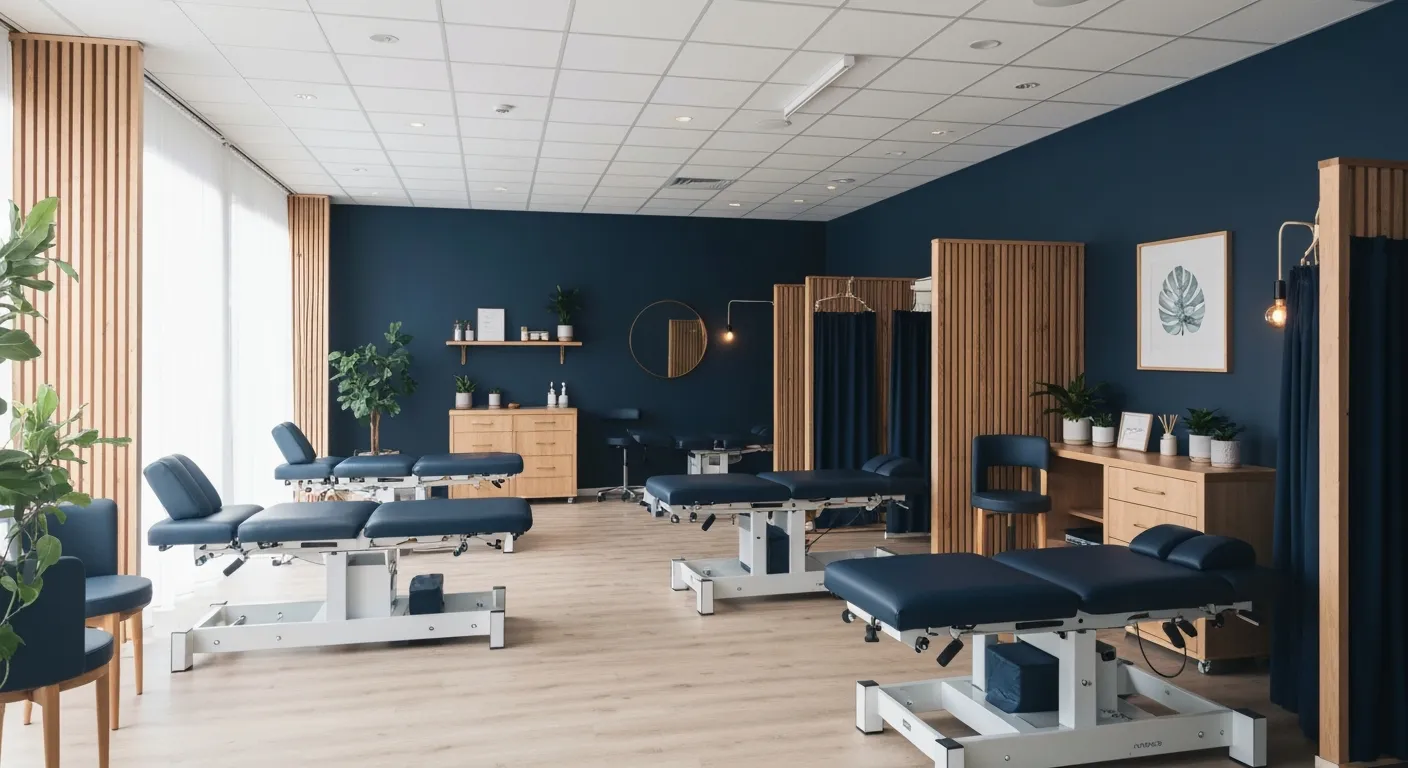
Rethinking Pain Management Beyond Surgery
Chronic pain affects millions, often outlasting the relief that surgery or medications can provide. As concerns about opioid dependency and invasive procedures grow, many individuals seek holistic, non-invasive strategies to control and alleviate pain. This article explores a spectrum of holistic treatment options, highlighting their mechanisms, safety, effectiveness, and the integrative role they play in comprehensive pain management.
Exploring Common Holistic and Alternative Pain Treatments
What are some common holistic and alternative treatment options for pain management beyond surgery?
Many individuals seek non-invasive options to manage pain effectively. These holistic methods focus on the whole person, aiming to reduce discomfort while promoting overall well-being.
Acupuncture is a well-supported therapy that involves inserting fine needles into specific points on the body. This stimulates the nervous system and may improve conditions like back pain, migraines, and osteoarthritis. It can also help decrease reliance on opioids.
Massage therapy manipulates soft tissues such as muscles and fascia. This practice enhances blood flow, relaxes muscles, and reduces stress, making it beneficial for conditions like neck pain, fibromyalgia, and knee osteoarthritis.
Movement-based practices like yoga and tai chi combine gentle movements with breathing exercises and mindfulness. These activities help improve flexibility, strength, and balance, which are crucial in managing chronic pain from arthritis, fibromyalgia, and other musculoskeletal issues.
In addition, mind-body approaches such as meditation, guided imagery, hypnosis, and progressive muscle relaxation can significantly decrease pain perception and improve physical function. These techniques reduce stress and promote relaxation.
Herbal remedies also play a notable role. Substances like turmeric (curcumin), boswellia, cloves, and aloe vera have anti-inflammatory and analgesic properties. While promising, it’s essential to consult healthcare professionals before using herbal supplements.
Overall, these therapies can be effective parts of a comprehensive pain management plan. When integrated with physical therapy, proper nutrition, and lifestyle changes, they offer a holistic approach that minimizes reliance on medications or surgery.
| Therapy Type | Main Benefits | Typical Conditions Managed | Additional Notes |
|---|---|---|---|
| Acupuncture | Stimulates nerve pathways, reduces inflammation | Back pain, migraines, osteoarthritis | Supports opioid reduction |
| Massage Therapy | Soft tissue relaxation, stress relief | Neck pain, fibromyalgia, knee pain | Supports blood circulation |
| Yoga and Tai Chi | Improves strength, flexibility, mental focus | Arthritis, low-back pain, headaches | Usually combined with physical therapy |
| Mind-Body Techniques | Decreases stress, alters pain perception | Chronic pain, headaches | Includes meditation, hypnosis, guided imagery |
| Herbal Remedies | Anti-inflammatory, pain-relief effects | Osteoarthritis, general inflammation | Use with medical advice |
Adopting a holistic approach often involves a team of healthcare professionals working together. Ongoing research continues to support these methods' safety and efficacy, making them valuable options for those seeking alternatives to drugs and surgery.
How Non-Invasive Therapies Alleviate Pain

Non-invasive and non-pharmaceutical therapies such as acupuncture, biofeedback, massage, and physical therapy work by influencing the nervous system and brain activity to reduce pain. Acupuncture involves inserting fine needles into specific points on the body, which stimulates the release of natural pain-relieving chemicals like endorphins, neurotransmitters, and adenosine. This process not only blocks pain signals but also alters neural pathways in the brain that are involved in the perception of pain, helping to diminish pain intensity.
Biofeedback is a technique that uses electronic devices to measure bodily functions such as heart rate, muscle tension, and breathing. By gaining awareness and control over these functions, individuals can decrease muscle tension and stress that contribute to pain. This method effectively influences neural circuits responsible for pain processing, promoting relaxation and decreasing neuroinflammation.
Massage therapy and physical therapy improve blood flow, reduce muscle stiffness, and help in the release of endorphins—the body's natural painkillers. These therapies also aid in relaxing tense muscles and improving joint mobility, which can significantly decrease discomfort. Additionally, they promote an overall sense of well-being and relaxation.
Psychological techniques like cognitive-behavioral therapy (CBT) and hypnosis modify how the brain processes pain. They target regions involved in the emotional and sensory dimensions of pain, helping individuals reframe negative thoughts and reduce their pain perception. Such approaches enhance the brain's ability to regulate and manage pain signals.
Together, these therapies address both the biological and psychological components of pain. They modulate neural activity, reduce neuroinflammation, and promote relaxation, leading to symptom relief, enhanced physical function, and a better quality of life for individuals suffering from chronic pain.
Primary Non-Drug and Non-Surgical Solutions for Chronic Pain

Chronic pain affects millions of Americans, often requiring approaches beyond medications or surgery. Several non-drug and non-invasive methods have gained recognition for effectively managing persistent pain.
Physical therapy is a cornerstone treatment. It involves tailored exercises, stretching, nerve stimulation, and manual techniques to improve flexibility, strengthen muscles around affected joints, and correct biomechanical issues. This approach not only reduces pain but also enhances mobility and function.
Massage therapy offers another valuable option. It involves kneading, tapping, and stroking soft tissues to promote relaxation, reduce muscle tension, and alleviate pain from conditions like back, neck, and shoulder pain. Clinical trials support its effectiveness as part of an integrative treatment plan.
Mind-body practices, including yoga, tai chi, meditation, and diaphragmatic breathing, help manage pain by calming the nervous system and altering pain perception. Yoga and tai chi, in particular, combine gentle movements with breathing exercises and mindfulness, which can decrease pain severity in conditions like osteoarthritis and fibromyalgia.
Psychological therapies, such as cognitive-behavioral therapy (CBT), hypnosis, and guided imagery, assist patients in reframing negative thoughts about pain, reducing emotional distress, and developing better coping skills. These approaches address the psychological aspects of chronic pain, supporting overall well-being.
Lifestyle modifications are also essential. Maintaining a balanced diet, staying physically active through walking or swimming, and applying heat or cold packs can further alleviate discomfort. These strategies contribute to a holistic approach to pain management, emphasizing the importance of addressing lifestyle factors.
Integrating these therapies into a comprehensive plan can reduce reliance on medications, lower the risk of side effects, and improve quality of life for those suffering from chronic pain.
| Approach | Techniques/Methods | Conditions Benefited |
|---|---|---|
| Physical Therapy | Exercises, stretching, nerve stimulation, manipulation | Musculoskeletal issues, post-injury recovery |
| Massage Therapy | Rubbing, tapping, soft tissue manipulation | Back, neck, shoulder pain |
| Mind-Body Practices | Yoga, tai chi, meditation, breathing exercises | Osteoarthritis, fibromyalgia, headaches |
| Psychological Therapies | CBT, hypnosis, guided imagery | Chronic pain, emotional distress |
| Lifestyle Modifications | Nutrition, activity, heat/cold therapy | Overall pain reduction |
A holistic approach tailored to individual needs offers the best chances for managing chronic pain effectively.
Evidence, Safety, and Effectiveness of Holistic Pain Relief Strategies

Many holistic pain management techniques have been studied for their safety and efficacy in reducing chronic pain. Acupuncture, for example, has a well-documented body of clinical evidence supporting its use for conditions like back pain, neck pain, headaches, and osteoarthritis. It is generally considered safe when performed by trained practitioners, with minimal adverse effects.
Physical therapy is another cornerstone of non-invasive pain relief. It involves exercises, manual therapies, and modalities such as heat, cold, and electrical stimulation. Its safety profile is high, and it has proven effective for improving mobility and reducing pain, especially for musculoskeletal issues.
Herbal supplements, including turmeric (curcumin), omega-3 fatty acids, and lavender oil, have shown promising results in alleviating pain conditions such as osteoarthritis, migraines, and neuropathy. While these natural products are generally safe, their efficacy varies, and potential interactions with conventional medications require careful consideration. For example, omega-3 supplements exceeding 2 grams daily can improve joint stiffness, but high doses may increase bleeding risk.
Other complementary modalities like massage therapy, guided imagery, mindfulness meditation, and yoga also have evidence supporting their role in pain management. These practices are safe for most individuals when performed properly and can help decrease pain severity, boost mood, and improve physical function.
However, some treatments such as certain herbal remedies like Thunder God Vine carry significant safety concerns, including adverse interactions and toxicity, and thus require monitoring under professional supervision.
Given the variability in evidence and safety profiles, it is vital to consult healthcare providers to tailor an individualized treatment plan. Integrating these approaches within a comprehensive strategy—combining physical therapy, lifestyle modifications, and psychological support—can optimize pain relief outcomes.
| Treatment Modality | Evidence Level | Safety Profile | Notes |
|---|---|---|---|
| Acupuncture | Well-supported for various pains | Generally safe with trained practitioners | Reduces medication reliance |
| Physical Therapy | Strong evidence for musculoskeletal pain | Very safe when guided by professionals | Improves function and reduces pain |
| Herbal Supplements | Promising but variable | Varies; interactions possible | Needs monitoring; consider personalized assessments |
| Massage & Bodywork | Supported by clinical trials | Safe for most, avoid certain skin conditions | Enhances relaxation; complements other therapies |
| Mindfulness & Yoga | Evidence for pain and stress | Safe when adapted to individual needs | Encourage consistent practice |
Enlisting a licensed healthcare professional’s guidance ensures that holistic therapies are safe and suited to individual needs, maximally improving pain management outcomes.
Lifestyle and Mind-Body Approaches to Chronic Pain Management

To manage chronic pain effectively, adopting certain lifestyle modifications alongside mind-body techniques can make a significant difference.
Engaging in regular low-impact physical activities, such as walking, swimming, yoga, and tai chi, can help improve flexibility, strength, and overall mobility. These exercises promote better circulation and can reduce pain while also enhancing mood through the release of natural painkillers like endorphins.
Maintaining a nutritious diet is equally important. Diets rich in fruits, vegetables, whole grains, olive oil, and nuts—such as the Mediterranean diet—are associated with reduced pain severity and improved quality of life. Additionally, supplements like omega-3 fatty acids and vitamin D may help decrease inflammation and improve symptoms.
Good sleep hygiene is crucial, as sleep disturbances often exacerbate pain perception. Establishing a regular sleep schedule and avoiding stimulants before bedtime may help in achieving restorative sleep. Additionally, avoiding smoking is recommended since nicotine can impair blood flow and slow healing.
Mind-body practices play a vital role in pain management. Techniques such as meditation, deep breathing exercises, guided imagery, and progressive muscle relaxation can lower stress levels and influence how pain is perceived. Practices like yoga and tai chi also foster mindfulness and gentle movement, which can improve joint health and mental well-being.
Complementary therapies like acupuncture, massage therapy, and biofeedback have shown value, especially when tailored to individual needs. These approaches often work best as part of a comprehensive plan developed with healthcare professionals.
Psychological support, including cognitive-behavioral therapy, can help reframe negative thoughts about pain, thereby improving emotional resilience. Support groups provide social connection and shared coping strategies.
In summary, a holistic approach—combining lifestyle changes, mind-body techniques, and professional guidance—offers the best chance for managing chronic pain effectively and improving overall quality of life.
Integrative and Natural Modalities: Combining Approaches for Chronic Pain
What integrative and natural methods are available for relieving chronic pain?
A holistic approach to managing chronic pain often involves multiple natural and integrative therapies that work together to provide relief without relying solely on medications or invasive procedures.
Acupuncture is one such method, involving inserting fine needles into specific points on the body to stimulate the nervous system. This technique has demonstrated effectiveness in alleviating conditions like back pain, neck pain, osteoarthritis, and migraines. It can also reduce the need for opioids among patients.
Massage therapy plays a complementary role by manipulating soft tissues to increase blood flow, relax muscles, and decrease inflammation. Clinical trials support its use for back pain, fibromyalgia, and joint discomfort, making it a popular option for non-drug pain relief.
Mind-body practices such as mindfulness meditation, diaphragmatic breathing, hypnosis, and progressive muscle relaxation help modify pain perception and reduce stress levels. These techniques improve physical functioning and decrease pain intensity.
In addition to these therapies, movement-based activities such as yoga, tai chi, swimming, and gentle stretching enhance flexibility, strengthen muscles, and improve joint mobility. Programs like yoga and tai chi particularly focus on breathing, mindfulness, and gentle movement, addressing conditions like osteoarthritis and fibromyalgia.
Dietary strategies include eating anti-inflammatory foods—such as fruits, vegetables, whole grains, and nuts—and considering supplements like turmeric or white willow bark, which may reduce inflammation and pain.
When integrated into a personalized treatment plan, these approaches can significantly improve quality of life for those suffering from chronic pain. Always consult healthcare professionals to ensure therapies are appropriate and safely combined based on individual health needs.
| Approach | Common Uses | Additional Benefits |
|---|---|---|
| Acupuncture | Back pain, migraines, osteoarthritis | Reduces other medication needs |
| Massage therapy | Soft tissue pain, fibromyalgia | Promotes relaxation and stress relief |
| Mind-body practices | Chronic stress-related pain | Enhances mental well-being |
| Movement therapies | Osteoarthritis, low-back pain | Improves flexibility and strength |
| Dietary supplements | Joint inflammation | Supports tissue health |
| Herbal remedies | Pain and inflammation | May provide natural relief |
In conclusion, a combination of these therapies offers a comprehensive, safer way to manage chronic pain, emphasizing overall well-being and individual tailored care.
Comparing Holistic Approaches for Long-Term Pain Relief Outcomes

When exploring the long-term management of chronic pain, different holistic and non-surgical methods show promising results in maintaining relief and improving quality of life. Approaches such as acupuncture, massage therapy, yoga, and spinal manipulation have been studied for their ability to produce lasting benefits.
Acupuncture has evidence supporting its sustained effectiveness for conditions like back pain, neck pain, and osteoarthritis. Many patients report decreased pain levels lasting months to over a year after treatment sessions. Massage therapy not only alleviates muscle tension temporarily but also promotes long-term improvements in pain and function, particularly for musculoskeletal issues.
Yoga and tai chi, which incorporate gentle movement combined with breathing techniques and mindfulness, help rewire pain perception pathways in the brain — a process linked to neuroplasticity. These practices can lead to enduring reductions in pain intensity, joint stiffness, and fatigue. Spinal manipulation and physical therapy too contribute to long-term gains by addressing biomechanical imbalances and strengthening muscles around affected joints.
Understanding the underlying mechanisms involved in pain modulation is essential. Many of these therapies influence neuroplasticity—the brain’s ability to rewire itself in response to sustained stimuli—helping to diminish central sensitization, a key factor in chronic pain. They also regulate neuroinflammation and neurotransmitter systems that sustain pain signals.
Personalized multimodal treatment plans that combine various therapies tailored to individual needs are often more effective than single approaches. For example, combining acupuncture with mindfulness techniques and targeted physical exercises can target different aspects of pain, leading to more durable relief.
Research supported by organizations like NCCIH indicates that such integrative strategies can reduce pain severity and improve physical and emotional well-being over the long term. In conclusion, holistic approaches that are customized, comprehensive, and based on an understanding of pain’s complex mechanisms tend to offer the best prospects for sustained pain relief and enhanced patient outcomes.
A Holistic Path Forward for Lasting Pain Relief
Effective pain management extends beyond surgery and medication. Holistic treatment options offer a broad, complementary spectrum addressing the physical, emotional, and psychological dimensions of chronic pain. By integrating evidence-based therapies like acupuncture, massage, physical therapy, and mind-body practices alongside lifestyle modifications, individuals can achieve meaningful and lasting relief. Collaborating with healthcare professionals to develop personalized, multimodal treatment plans enhances safety, efficacy, and quality of life. Embracing these holistic strategies empowers those suffering from chronic pain to reclaim function and well-being without relying solely on invasive procedures or pharmaceuticals.
References
- 5 alternative treatments for chronic pain
- Pain Relief Without Drugs or Surgery
- Mayo Clinic Q and A: Alternative treatments for chronic pain
- Chronic Pain and Complementary Health Approaches
- Non-Drug Approaches to Chronic Pain - Whole Health ...
- Exploring alternative approaches to pain management
- Non-Drug Pain Management
- Holistic Pain Relief: Alternative Ways to Treat Chronic Pain
- How to Achieve Long-Term Pain Relief Without Surgery in ...
- These 9 Surgical Alternatives Can Help You Manage ...
Recent articles

Effective Corrective Exercises for Sustainable Pain Management

Taking a Root Cause Approach to Chronic Pain Management

Holistic Pain Management Techniques Without Surgery

How Patient Success Stories Validate Chiropractic Care Benefits

Spinal Decompression: Innovative Treatment for Sciatic Nerve Pain

Spinal Decompression Therapy: A Non-Invasive Approach to Sciatica Relief

Exploring Holistic Approaches Beyond Surgery for Pain Relief

Practical Lifestyle Advice to Support a Healthy Spine Every Day

Corrective Exercise Routines Designed for Long-Term Pain Prevention

Real Patient Stories: Overcoming Chronic Pain with Chiropractic Care

Lifestyle Changes That Promote a Healthy Spine and Prevent Injury

How Addressing the Root Cause of Pain Leads to Lasting Relief

Non-Surgical Holistic Therapies to Manage Chronic Pain Effectively

Nutritional Counseling's Impact on Physical Health and Healing

Benefits of Regular Chiropractic Care for a Stronger Back

Your First Chiropractic Visit: What to Expect and How to Prepare

Patient Experiences: How Chiropractic Care Transformed Their Lives

Exploring Holistic, Non-Surgical Options for Pain Management

Combining Physiotherapy with Chiropractic Treatments for Enhanced Recovery

Holistic Treatments That Offer Alternatives to Surgery for Pain Relief

Corrective Exercise Strategies for Long-Term Spine Health

How Physiotherapy Complements Chiropractic Adjustments for Better Outcomes

First-Time Chiropractic Visitors: What You Should Know

Understanding the Importance of Treating Pain at Its Source

Adopting Lifestyle Changes to Support Your Spine's Wellness

Utilizing Physiotherapy to Enhance Chiropractic Treatment Outcomes

The Key Advantages of Chiropractic Care for Back Pain Sufferers

Why Focusing on Root Causes Improves Pain Treatment Success

Corrective Exercises That Promote Lasting Pain Relief and Mobility

Sciatica Relief Through Targeted Spinal Decompression Techniques

Preparing for Your First Chiropractic Appointment with Confidence

Healthy Lifestyle Habits for Maintaining Spinal Alignment

Success Stories Highlighting Chiropractic's Role in Pain Recovery

Top Benefits of Chiropractic Care for Chronic Back Pain

Nutrition Tips to Boost Your Overall Wellness and Recovery

How Chiropractic Care Alleviates Back Pain Naturally

How Nutritional Counseling Supports Overall Wellness and Spine Health

Step-by-Step Guide to Your First Visit with a Chiropractor

Using Nutrition to Support Chiropractic and Overall Wellness

Integrating Physiotherapy in Your Chiropractic Healing Journey

How Physiotherapy Complements Chiropractic Adjustments for Faster Healing

Lifestyle Tips for Maintaining a Healthy Spine and Preventing Back Pain

Heartwarming Patient Testimonials Highlighting Chiropractic Success

How Proper Nutrition Supports Chiropractic and Physiotherapy Treatments

Combining Physiotherapy and Chiropractic Treatments for Optimal Recovery

Why Chiropractic Treatments Are Effective for Managing Back Pain

Choosing a Chiropractor: Tips for Finding a Trusted Provider

Integrating Physiotherapy and Chiropractic: Benefits and What to Expect

How Tailored Corrective Exercises Can Aid in Pain Management

Chiropractic Care: A Proven Solution for Alleviating Back Pain

What to Expect at Your First Chiropractic Visit: A Comprehensive Guide

The Importance of Root Cause Analysis in Effective Pain Management

The Role of Corrective Exercises in Sustaining Pain-Free Living

Combining Chiropractic and Physiotherapy for Comprehensive Pain Relief

How Addressing Underlying Causes Improves Pain Treatment Effectiveness

Maintaining Spinal Health Through Lifestyle Changes and Preventive Care

Understanding the Benefits of Chiropractic Adjustments for Back Pain Sufferers

Spinal Decompression Therapy: A New Hope for Sciatica Relief

Lifestyle Recommendations to Support a Healthy Spine and Reduce Pain

Choosing the Right Chiropractor: Key Factors to Consider Before Your First Appointment

Non-Invasive Treatment Alternatives: A Holistic Approach to Pain Relief

Corrective Exercises to Support Long-Term Relief from Chronic Pain

Exploring Non-Surgical Approaches to Spine Health and Wellness

Tips for Daily Habits That Keep Your Spine Strong

Success Stories: How Chiropractic Treatments Changed Lives

Why Focusing on the Root Cause of Pain Leads to Better Outcomes

Nutritional Counseling and Its Impact on Overall Wellness and Recovery

Patient Testimonials That Showcase the Power of Chiropractic Care

Preparing for Your First Chiropractic Appointment: What You Need to Know

Holistic Treatment Options: Beyond Surgery for Pain Relief

Holistic Pain Relief Methods That Avoid Surgery

Nutritional Strategies for Supporting Spine Health and Recovery

First Chiropractic Visit: What Happens and How to Prepare

Chiropractic Patient Success Stories: Inspiring Journeys to Wellness
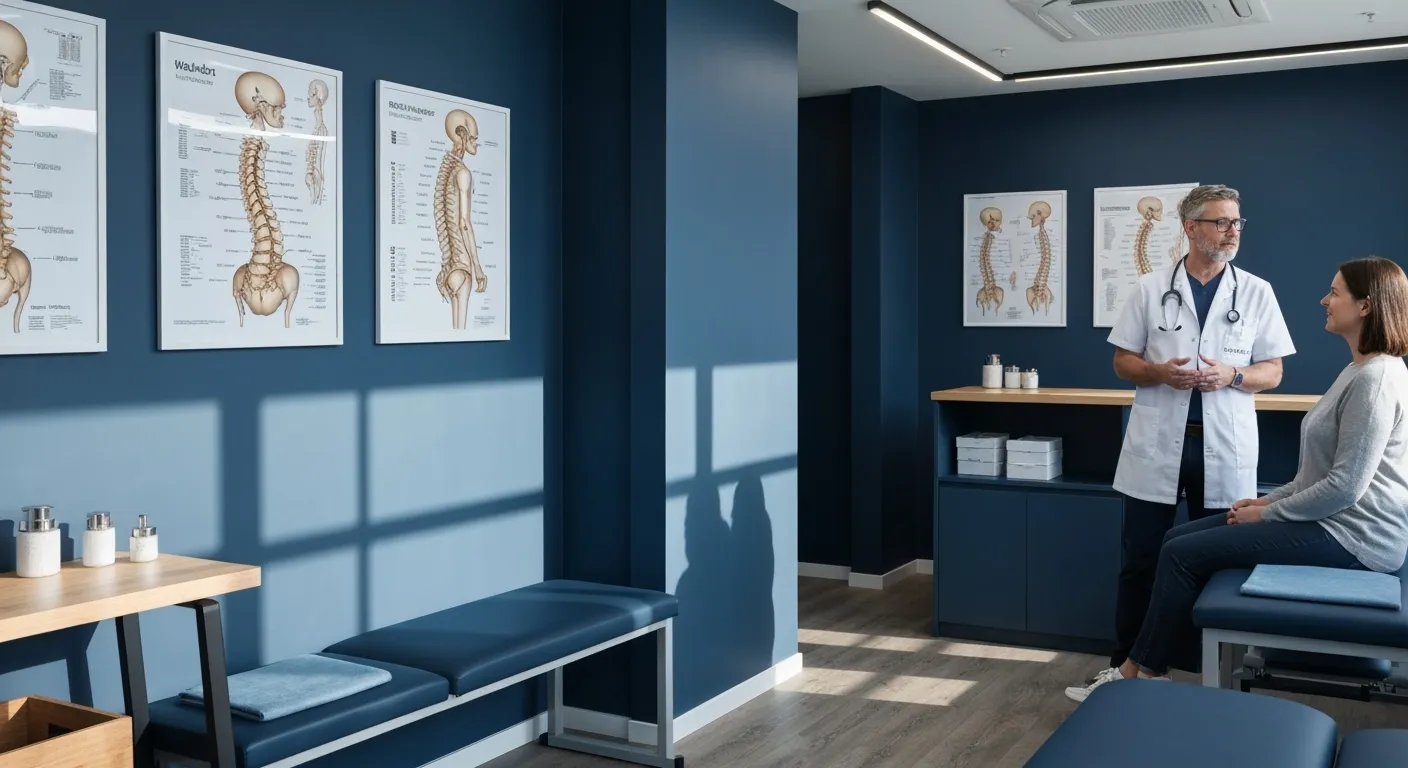
Effectiveness of Spinal Decompression Therapy in Managing Sciatic Nerve Pain

Addressing Pain at Its Source: Why Treating the Root Cause Matters

Corrective Exercise Programs Designed for Long-Term Pain Prevention

Healthy Lifestyle Advice for Maintaining Spinal Alignment

Understanding Spinal Decompression as a Treatment for Sciatica Pain
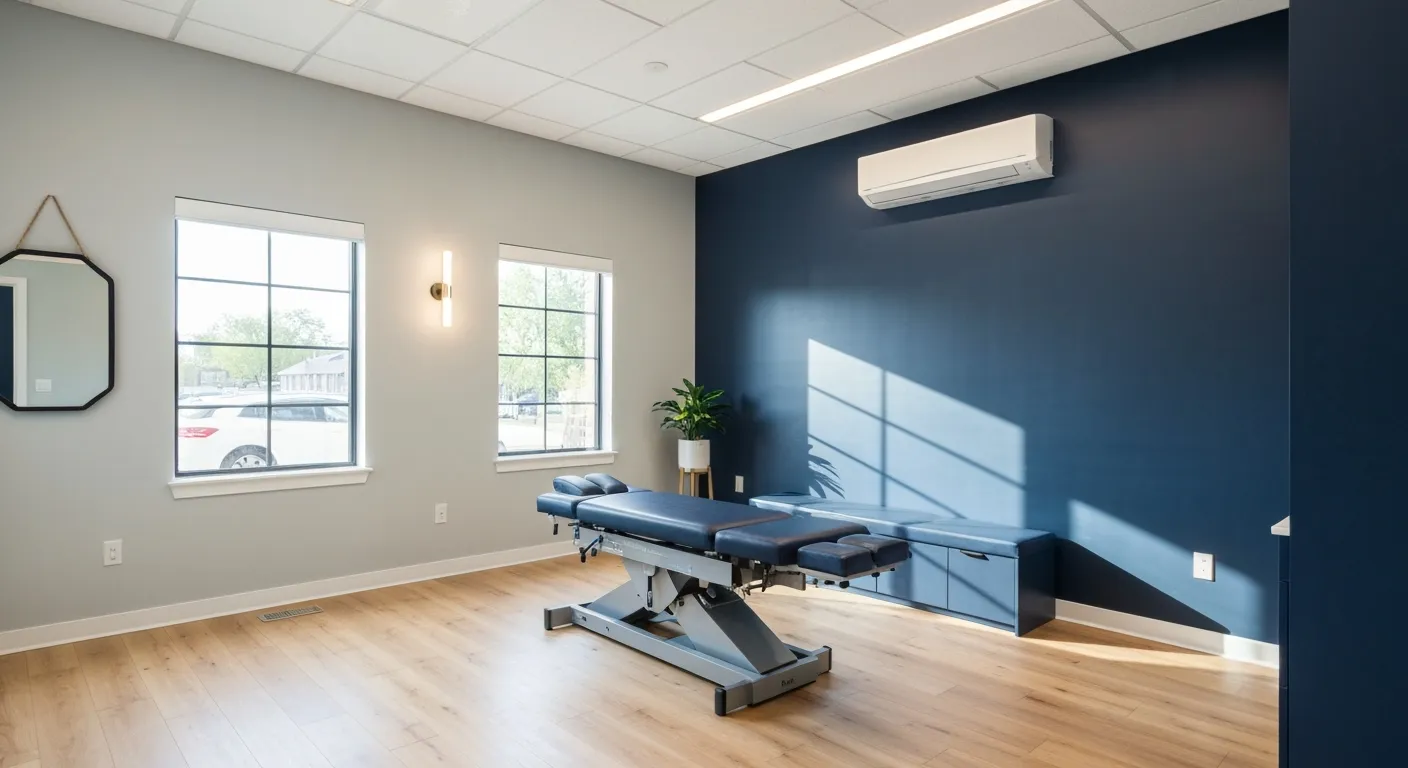
Benefits of Chiropractic Care Specifically for Back Pain Relief

Understanding Gait Analysis in Physiotherapy
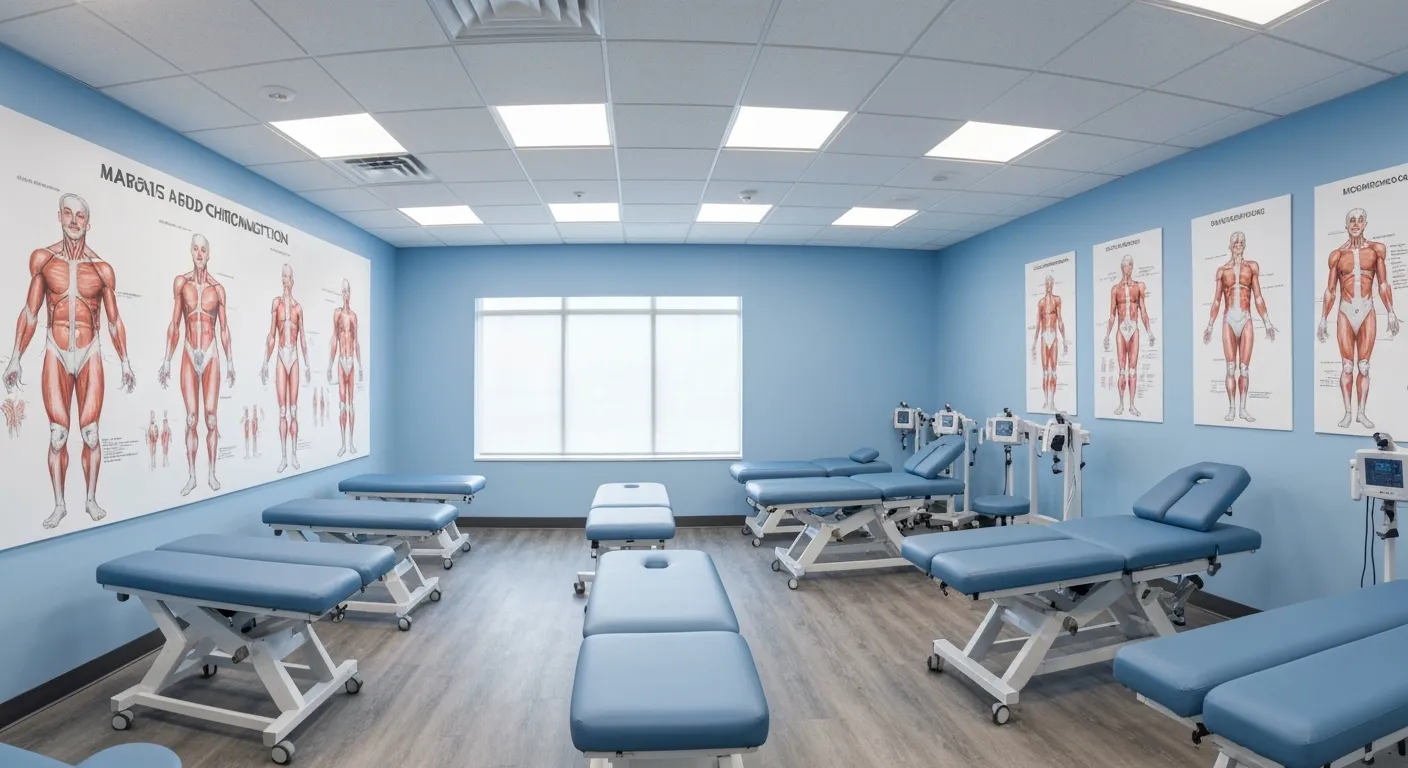
The Difference Between Muscle Soreness and Dysfunction

Workplace Stress Statistics: How Muscle Tension Impacts Productivity

How Physiotherapy Improves Mobility for Seniors

How to Communicate Pain Levels to Your Therapist Effectively
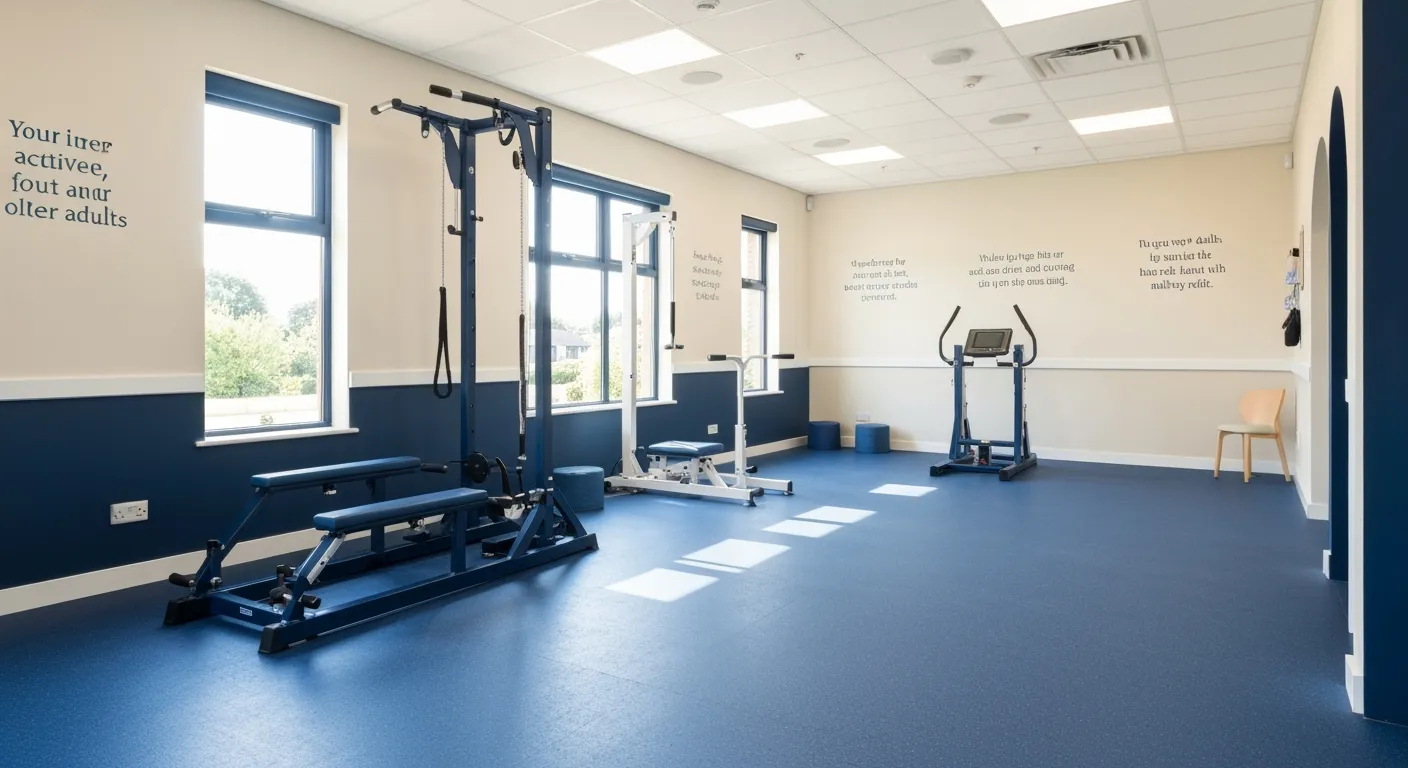
Physiotherapy Interventions for Balance and Fall Prevention

How Physiotherapy Helps Post-Surgical Recovery

Lifestyle Advice Everyone with Back Pain Should Follow

Chiropractic Industry Statistics: Growth, Demand, and Future Trends

Myofascial Release: What It Is and Why It Matters

Chiropractic Care vs. Traditional Medicine: Cost and Effectiveness Statistics

Ergonomic Workspace Tips to Support Spinal Health

Why Proper Breathing Matters During a Massage Session
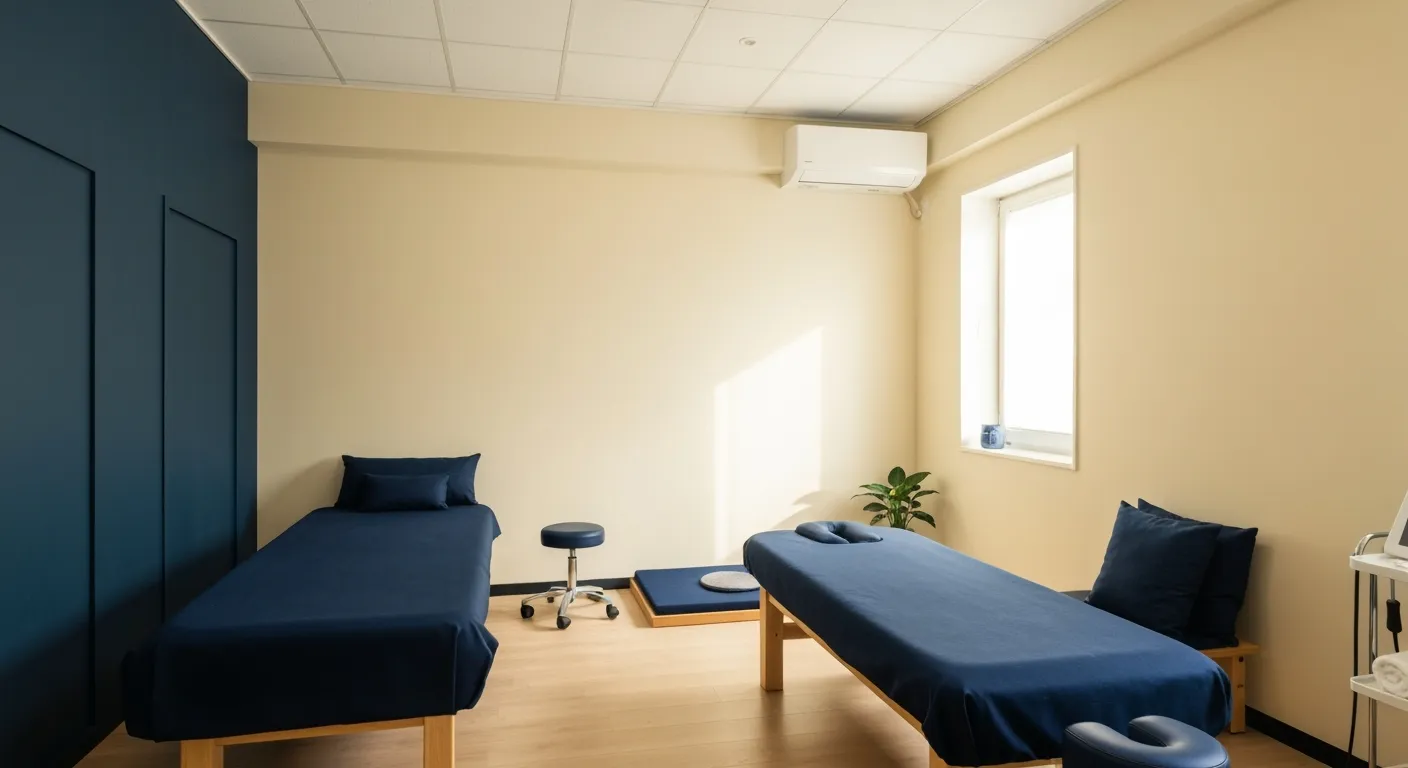
Client Retention Trends in the Therapeutic Bodywork Industry

Why Physiotherapy Is Key in Preventing Re-Injury

How Massage Therapy Supports Natural Pain Relief
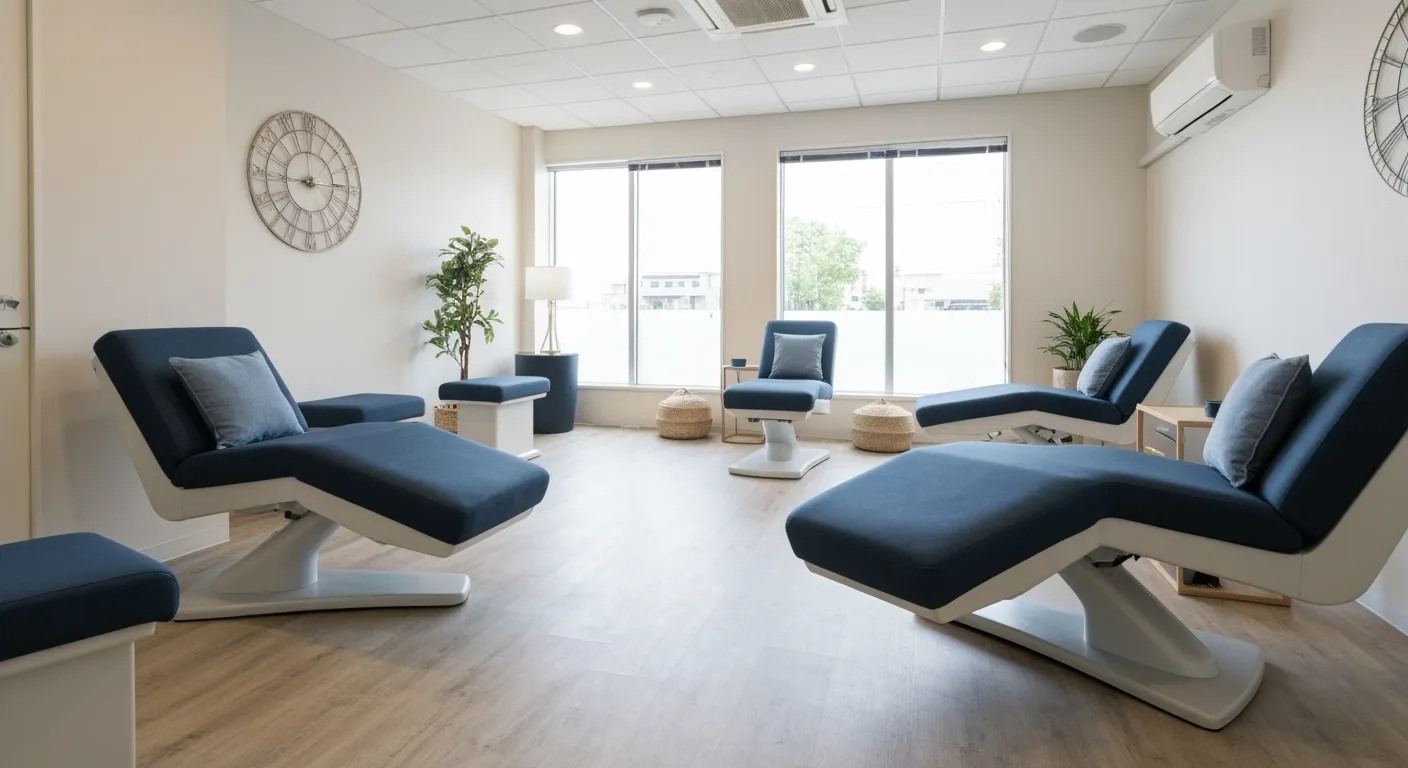
Healthcare Cost Reduction Through Preventive Bodywork Use

Athlete Massage Statistics: Pre-Event vs. Post-Event Outcomes

Massage for Migraine and Headache Relief

